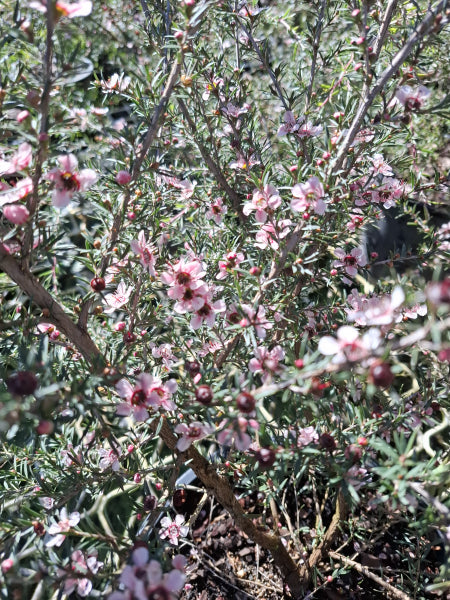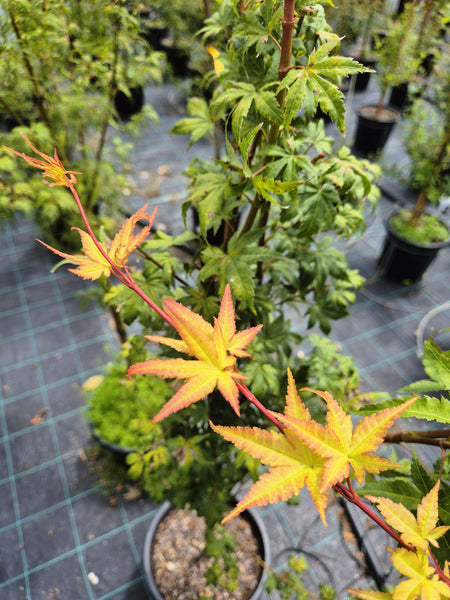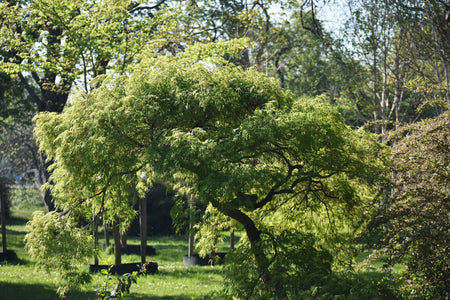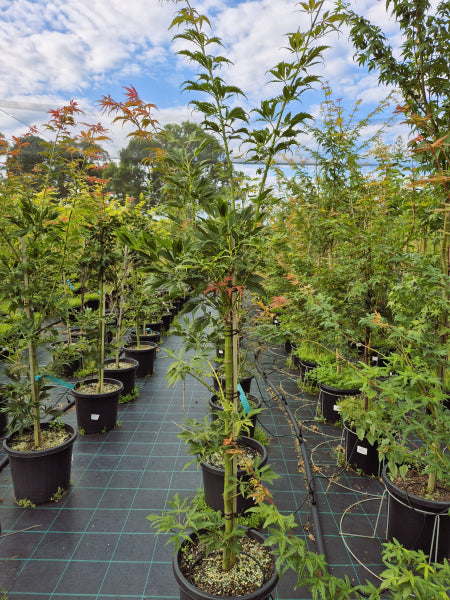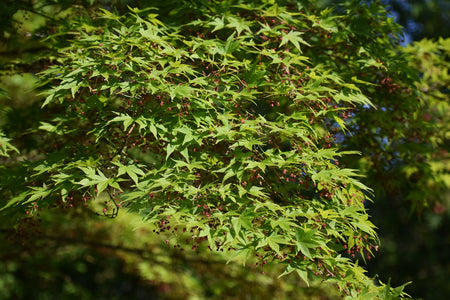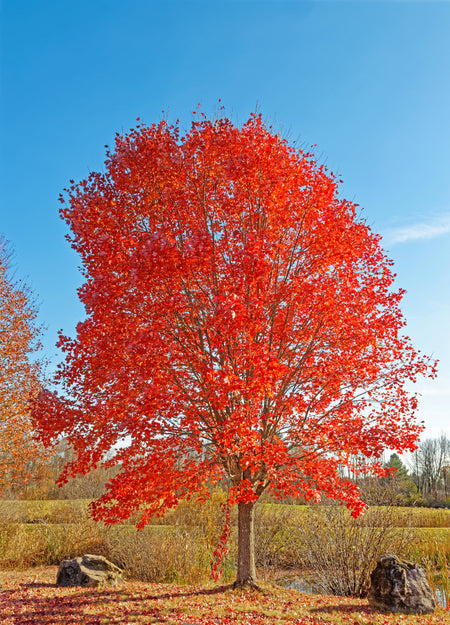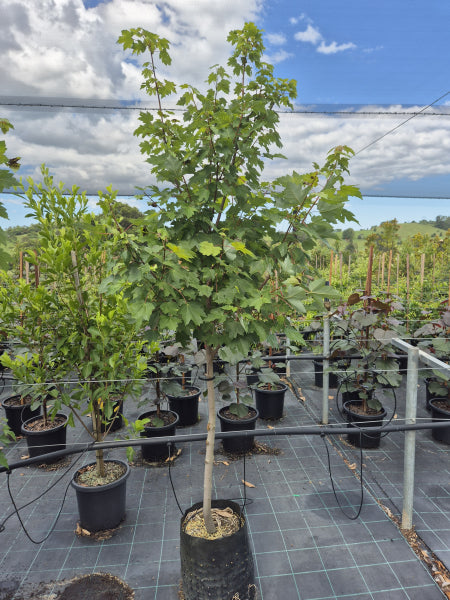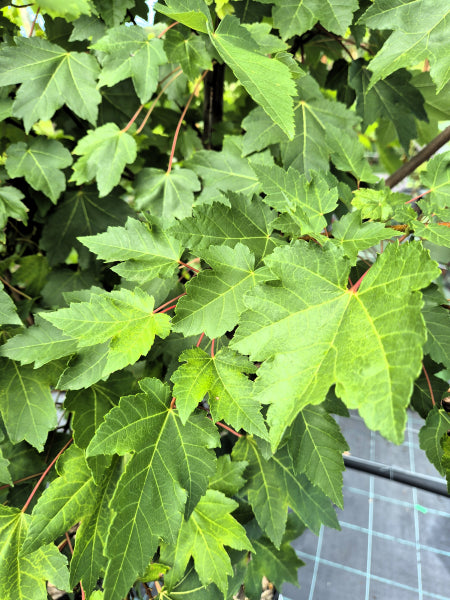Plant info
How to Care for Tea Tree Leptospermum
Caring for Leptospermum involves ensuring they are planted in moist, well-draining soils. Most Leptospermum species prefer sunny spots with adequate airflow, which helps prevent disease. Regular watering, especially in summer, is essential to maintain their health and support the abundance of flowers that attract bees and other pollinators. Pruning after flowering can enhance growth and promote lovely blooms in spring.
Popular Species of Leptospermum
The genus Leptospermum comprises several species, each offering unique features. For instance, the tea tree derives its common name from the leaves that produce a fragrant oil. Many Leptospermum varieties, such as the lemon-scented tea tree, are ideal for pots or as shrubs in garden beds. Most species are endemic to regions like New Guinea and can adapt to various climates, making them excellent choices for a broad range of gardens.
Ideal Habitats for Leptospermum (Tea Trees)
Leptospermum species commonly occur in moist habitats, including coastal regions and open forests. These plants thrive in the nutrient-rich soils found in their native environments, allowing them to grow tall and robust. Their ability to adapt to most soils makes them an attractive option for gardeners looking to cultivate native flora in Queensland and beyond.
Frequently Asked Questions about Leptospermum
1. What are the best conditions for growing tea tree leptospermum?
○ Most Leptospermum species prefer well-drained soils, full sun, and adequate moisture.
2. Can Leptospermum tolerate drought?
○ While they prefer moist conditions, many leptospermum species are hardy and can withstand periods of drought once established.
3. How do I propagate Leptospermum?
○ Seeds can be collected from the woody capsules and sown in spring. Alternatively, cuttings can be taken from healthy plants.
Free Delivery
We offer free delivery to Brisbane and Sunshine Coast on orders over $249, and Gold Coast & Ipswich over $399.
Delivery usually occurs on Wednesdays, Thursdays & Fridays depending on the area, within 2-7 business days from placing your order.
What's Included
Free Unlimited Plant Support
Our customers receive unlimited, expert support to keep their plants thriving.
Say goodbye to conflicting advice online — trust our Qualified Horticulturalist for reliable and personalised care.
Delivered On Time, With Care
We keep you updated about your delivery and ensure it arrives exactly when promised.
We'll place your plants where you need them — whether it’s your backyard, garden, or project site.
Free Plant Care Guide
You’ll get an exclusive Plant Care Guide with an easy to follow 5-Step Process to help you maximise the growth of your new plants.
It also includes detailed Care Instructions for maintaining your plant's health to ensure it grows and thrives.
30-Day Quality Guarantee
If for any reason you're not thrilled about the quality of the plants when they arrive - let us know and we'll happily take them back and provide a full refund.
We'll also replace your plants if any don't survive due to issues with their quality, within 30 days from delivery.
Leptospermum Pink Cascade
- 200 mm
- 140 mm
Adding product to your cart
Buy More, Save More. Get up to 20% off!
Plant info
How to Care for Tea Tree Leptospermum
Caring for Leptospermum involves ensuring they are planted in moist, well-draining soils. Most Leptospermum species prefer sunny spots with adequate airflow, which helps prevent disease. Regular watering, especially in summer, is essential to maintain their health and support the abundance of flowers that attract bees and other pollinators. Pruning after flowering can enhance growth and promote lovely blooms in spring.
Popular Species of Leptospermum
The genus Leptospermum comprises several species, each offering unique features. For instance, the tea tree derives its common name from the leaves that produce a fragrant oil. Many Leptospermum varieties, such as the lemon-scented tea tree, are ideal for pots or as shrubs in garden beds. Most species are endemic to regions like New Guinea and can adapt to various climates, making them excellent choices for a broad range of gardens.
Ideal Habitats for Leptospermum (Tea Trees)
Leptospermum species commonly occur in moist habitats, including coastal regions and open forests. These plants thrive in the nutrient-rich soils found in their native environments, allowing them to grow tall and robust. Their ability to adapt to most soils makes them an attractive option for gardeners looking to cultivate native flora in Queensland and beyond.
Frequently Asked Questions about Leptospermum
1. What are the best conditions for growing tea tree leptospermum?
○ Most Leptospermum species prefer well-drained soils, full sun, and adequate moisture.
2. Can Leptospermum tolerate drought?
○ While they prefer moist conditions, many leptospermum species are hardy and can withstand periods of drought once established.
3. How do I propagate Leptospermum?
○ Seeds can be collected from the woody capsules and sown in spring. Alternatively, cuttings can be taken from healthy plants.
Free Delivery
We offer free delivery to Brisbane and Sunshine Coast on orders over $249, and Gold Coast & Ipswich over $399.
Delivery usually occurs on Wednesdays, Thursdays & Fridays depending on the area, within 2-7 business days from placing your order.
What's Included
Free Unlimited Plant Support
Our customers receive unlimited, expert support to keep their plants thriving.
Say goodbye to conflicting advice online — trust our Qualified Horticulturalist for reliable and personalised care.
Delivered On Time, With Care
We keep you updated about your delivery and ensure it arrives exactly when promised.
We'll place your plants where you need them — whether it’s your backyard, garden, or project site.
Free Plant Care Guide
You’ll get an exclusive Plant Care Guide with an easy to follow 5-Step Process to help you maximise the growth of your new plants.
It also includes detailed Care Instructions for maintaining your plant's health to ensure it grows and thrives.
30-Day Quality Guarantee
If for any reason you're not thrilled about the quality of the plants when they arrive - let us know and we'll happily take them back and provide a full refund.
We'll also replace your plants if any don't survive due to issues with their quality, within 30 days from delivery.
